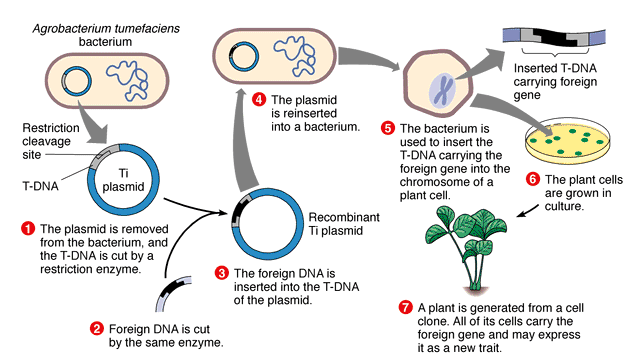Living Modified Organisms (LMOs): Understanding Genetically Engineered Life Forms
What are Living Modified Organisms (LMOs)?
Living Modified Organisms (LMOs) are organisms whose genetic material has been altered using modern biotechnology techniques, such as genetic engineering. These techniques enable the transfer of genes from one organism to another, even between unrelated species, resulting in novel combinations of genetic material that would not occur naturally through mating or recombination.

Key Characteristics of LMOs
LMOs possess several key characteristics that distinguish them from their non-modified counterparts:
- Novel Genetic Combinations: LMOs contain genetic material that has been artificially introduced, resulting in combinations of genes that would not occur naturally. This allows for the creation of organisms with unique traits and functionalities.
- Targeted Genetic Modifications: The genetic modifications in LMOs are precise and targeted, allowing for the introduction or alteration of specific genes responsible for desired traits. This level of control enables the development of organisms tailored for specific purposes.
- Transgenic Nature: LMOs are often transgenic, meaning they contain genes from a different species. The ability to transfer genes across species barriers expands the possibilities for creating organisms with novel characteristics.
Relationship Between LMOs and GMOs
Living Modified Organisms (LMOs) and Genetically Modified Organisms (GMOs) are closely related terms but are used in slightly different contexts.
Definitions and Scope
- LMOs: Refers to living organisms whose genetic material has been altered through modern biotechnology, emphasizing their potential impact on biodiversity and the environment. This term is often used in international regulatory frameworks, such as the Cartagena Protocol on Biosafety.
- GMOs: Encompasses all organisms (living or non-living) whose genetic material has been modified using genetic engineering techniques. This term is widely used in scientific, agricultural, and public discourse.
Key Differences
- Living vs. Non-living: LMOs specifically refer to living organisms, while GMOs can include non-living products derived from these organisms.
- Regulatory Focus: LMOs are regulated with an emphasis on their environmental impact and biosafety. In contrast, GMOs are regulated concerning food safety, environmental effects, and health implications.
Overlap
All LMOs are considered GMOs, but not all GMOs are LMOs. The distinction is primarily regulatory.
Applications of LMOs
LMOs have a wide range of applications across various sectors, including agriculture, medicine, and environmental management. Some notable applications include:
Agriculture
LMOs have significantly impacted agriculture through the development of genetically modified crops. These crops can be engineered to exhibit traits such as increased yield, resistance to pests and diseases, tolerance to herbicides, and enhanced nutritional content. Examples include Bt cotton, which is resistant to insect pests, and Golden Rice, which is fortified with beta-carotene to address vitamin A deficiency.
Medicine
LMOs play a crucial role in the production of therapeutic proteins and vaccines. Genetically modified bacteria, yeast, and mammalian cells are used as bioreactors to produce recombinant proteins, such as insulin for diabetes treatment and factor VIII for hemophilia management. Additionally, LMOs are employed in the development of gene therapies and regenerative medicine applications.
Environmental Management
LMOs offer potential solutions for environmental challenges. Genetically modified microorganisms can be used for bioremediation, where they are engineered to degrade pollutants and clean up contaminated sites. LMOs can also be designed to enhance carbon sequestration, improve soil fertility, and contribute to sustainable agriculture practices.
Regulation and Safety Considerations
The development and use of LMOs are subject to strict regulations to ensure their safety for human health and the environment. International agreements, such as the Cartagena Protocol on Biosafety, provide a framework for the safe handling, transport, and use of LMOs.
Key safety considerations for LMOs include:
- Environmental Impact Assessment: Rigorous environmental risk assessments are conducted to evaluate the potential effects of LMOs on ecosystems, biodiversity, and non-target organisms.
- Food and Feed Safety: LMOs intended for food and feed use undergo extensive safety assessments to ensure they are as safe as their conventional counterparts and do not pose any additional risks to human or animal health.
- Containment and Monitoring: Measures are put in place to prevent the unintended release of LMOs into the environment. This includes physical containment facilities, monitoring systems, and emergency response plans.
Ethical and Societal Considerations
The development and use of LMOs raise various ethical and societal considerations. Some key issues include:
- Public Perception and Acceptance: There are ongoing debates and concerns among the public regarding the safety, necessity, and long-term impacts of LMOs. Effective communication, transparency, and public engagement are crucial for addressing these concerns.
- Intellectual Property Rights: The patenting of LMOs and related technologies raises questions about ownership, access, and benefit-sharing. Ensuring fair and equitable access to LMO-derived benefits is an important consideration.
- Socio-Economic Impacts: The introduction of LMOs can have significant socio-economic implications, particularly for smallholder farmers and indigenous communities. Assessing and addressing these impacts is essential for promoting inclusive and sustainable development.
Future Prospects and Challenges
The field of LMOs continues to evolve rapidly, with advancements in genome editing technologies, such as CRISPR-Cas9, offering new opportunities for precise genetic modifications. These tools have the potential to accelerate the development of LMOs with enhanced traits and applications.
However, several challenges need to be addressed for the responsible and sustainable use of LMOs. These include improving public trust and acceptance, ensuring equitable access to LMO-derived benefits, and developing robust regulatory frameworks that keep pace with technological advancements.
As research progresses, it is crucial to engage in multidisciplinary collaborations, involving scientists, policymakers, stakeholders, and the public, to navigate the complex landscape of LMOs and harness their potential while addressing the associated challenges.
Further Reading
Critical Reviews in Food Science and Nutrition, The politics and science behind GMO acceptance
